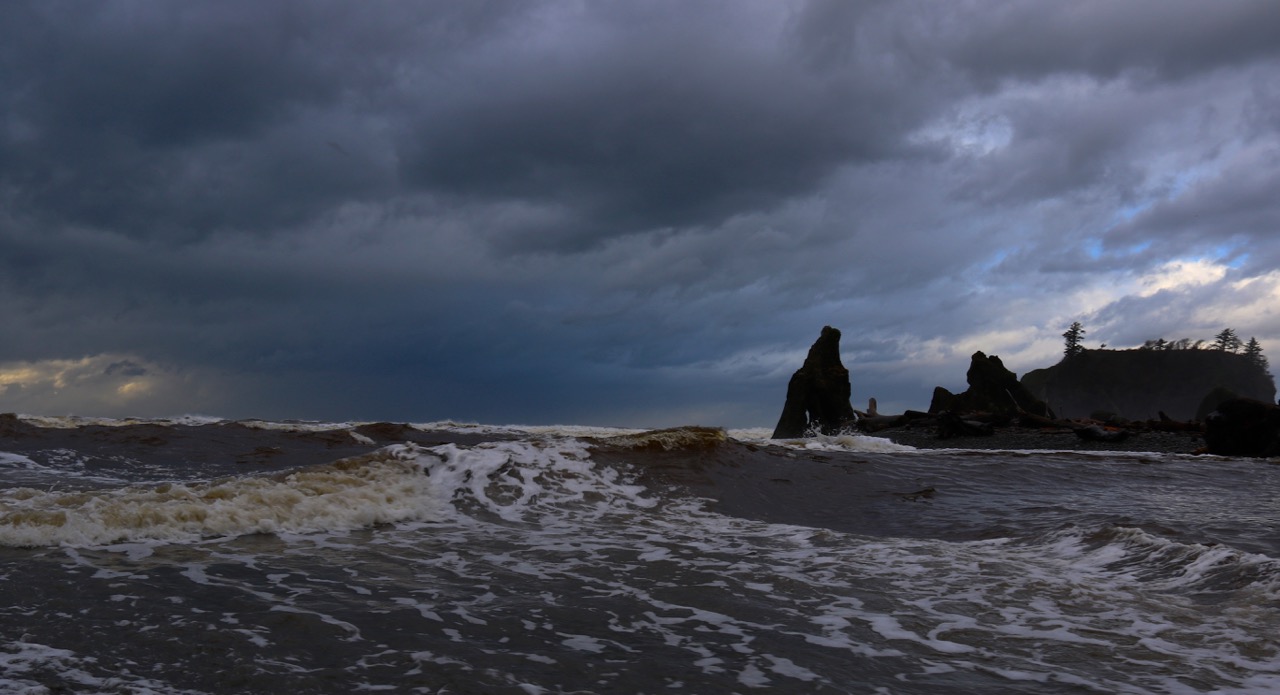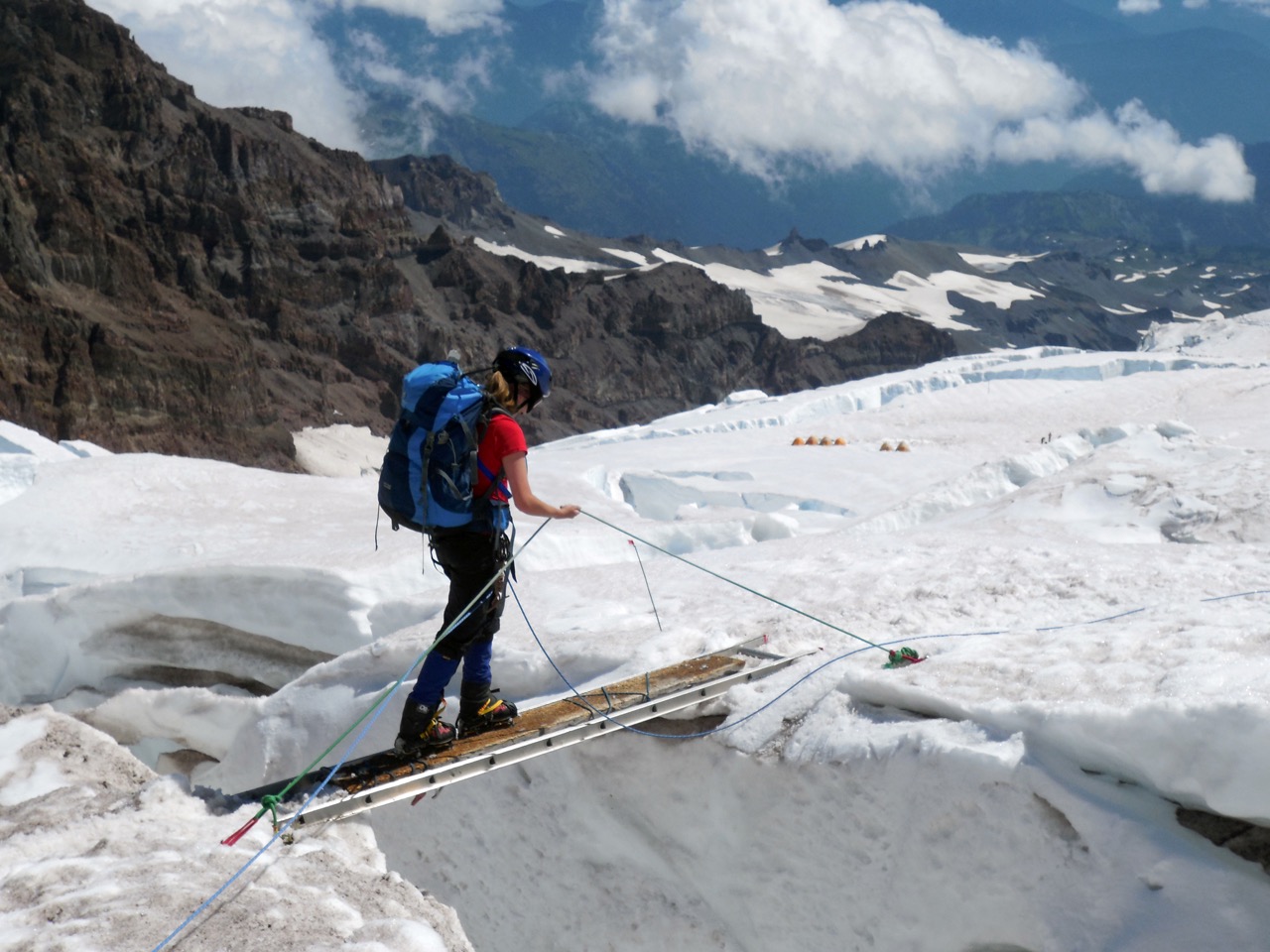I have been called a fair weather hiker by quite a few people. For awhile, I denied this, hoping I could convince myself and others that I would be outdoors in rain, snow, sun, wind, whatever. I have tried, and I often fail to shake this label off of me. For as much as I feel the call of the wild on sunny days, I experience a pull toward comfort on rainy cold days. Wrapped in a blanket, sitting in front of a fire, drinking whiskey and hot chocolate, this is where my brain longs to be during inclement weather. Sure, I have hiked the rainforests in monsoons, trail ran Yellowstone in blizzards and climbed towering peaks in severe winds, but if you ask me if I enjoyed it, my voice may waiver as I respond of course. Bad weather and I usually not friends, but when I hear of a storm raging toward the Olympic Coast, everything changes.
As the summer officially ends and the seemingly endless gray gloom returns to the Pacific Northwest, people prepare to hunker down for the next few months. Sure, there might be days or even weeks of great weather, but most fair weather hikers as resigned to a more sedentary life until spring and summer. That is why fall and winter are typically when all but the heartiest of the outdoor community of the Pacific Northwest take a break. For a lot of the time, I fall into that category. Constant drizzle replaces the sunny days and a general lethargy washes over the region. That is, until a storm is predicted.
Once a storm is setting its sights on the Pacific Northwest, the region receives a jolt of energy. Instead of planning hikes and outdoor adventures, we prepare for possible power outages and generally try to avoid being outside for anything longer than a few minutes. Strong winds, landslides, falling trees, heavy rain and storm surges are not an ideal time to go out into nature and explore. Yet, that is when I feel alive and feel an impossible to ignore pull toward the coast. Drawn to it like a moth to a light, incoming storms cause me to pack up all my gear and head west without thinking.
(Note: Exploring the beach can be deadly during storms. Use extreme caution and great judgement when on or around driftwood and stay out of the water!)
The Washington Coast is where I grew up. Well, kind of. Technically, I spent six of my formative years living within an ear shot of the mighty Pacific Ocean. Its breaking waves provided the white noise I need to sleep through the night and during the daylight hours I would wander around collecting agates and birdwatching. During the summer, my town would become inundated with tourists, hoping for a scenic weekend or vacation along the coast. Once the rains started, the crowds would vanish, leaving the small community feeling like an isolated island instead of a remote Peninsula. It was then that I realized how little the general population of outdoor enthusiasts enjoy storm watching.

I was a barometer watcher as a kid, part of the reason I still enjoy talking about the weather as an adult. With glee and anticipation, my family would watch the news and our implements of weather tracking as the pressure dropped, signaling an incoming storm. As the winds started to howl and the swells became huge, we would drive to the beach, park in a safe area, and experience the awesome power of a storm. Winds of 60mph would rock our old pickup back and forth, while giant logs would be tossed by the frothy seas like they were toothpicks being thrown by a major league baseball pitcher. These storms are some great memories for me, so it is little wonder that I long to return to these moments.
Out along the coast of Olympic National Park, storm watching is one of the underrated experiences in the vast swath of Public Lands. From Kalaloch up to Cape Flattery, the powerful storms pack near Hurricane Force winds and insanely huge storm surges batter the rugged shoreline, helping to carve out the memorable sea stacks and bring in millions of pieces of driftwood. These storms, combined with inches of rain a day, tend to keep all but a hearty handful of visitors away. It is during these storms that a visit to the coast will blow you away, figuratively. I hope.

Many years ago, I traveled out to the coast to watch such a storm roll in. The highest swells and strongest winds were supposed to reach my destination, Ruby Beach, at high tide, making for what could be a perfect day for storm watching along the wild Olympic Coast. Normally, Ruby Beach is accessible, with a rocky beach to wander and take in the sights. On this day, I arrived to find the beach gone, replaced by frothy water all the way to the trail. Cautiously, I worked by way down to one of the few remaining places not inundated by the storm. During storms, the slick driftwood shifts and churns, creating the perfect place to break an ankle or leg, or possibly get pinned underneath a giant log. Precariously, I picked my way through the maze of danger and arrived on solid ground.
For an hour or so, I sat in silence, listening to the wind howl and the ever churning rocks get shuffled by the waves. Cedar Creek, which runs to the ocean next to Ruby Beach’s iconic sea stacks, reversed course because of the storm surge, with waves working their way a quarter to half a mile upstream. The wind increased as the tide started receding, but the falling seas weren’t noticeable. The storm raged on, and would last for another five or six hours like this. Pelted by rain drops blown sideways for hours, and the realization that only a few more minutes of day light remained, I decided to call it a day and headed back to the car.
Changing out of my rain gear, I sat in the car, reliving my day by looking though my pictures. I felt alive, exhilarated by the power of nature and the beauty of a storm along the rugged coast of Washington State. For most who visit the coast of Olympic, they see it in the good seasons, when rain may occur, but not like this. Few head to the coast during storms and honestly, they are missing out. As darkness quickly enveloped Highway 101 on my drive home, I couldn’t help but smile. I had once again see a great storm along the Olympic Coast and I was eager to share the experience with all, hoping that more would discover this truly unique and underrated experience on our public lands.

If you would like to watch storms on the coast, please pick up one of my Olympic National Park and Forest Guidebooks. They will help you plan the perfect trip, no matter what the weather!
*This post was written in one hour for #NatureWritingChallenge. Follow the Hashtag on Twitter to be a part of next week’s writing adventure.




